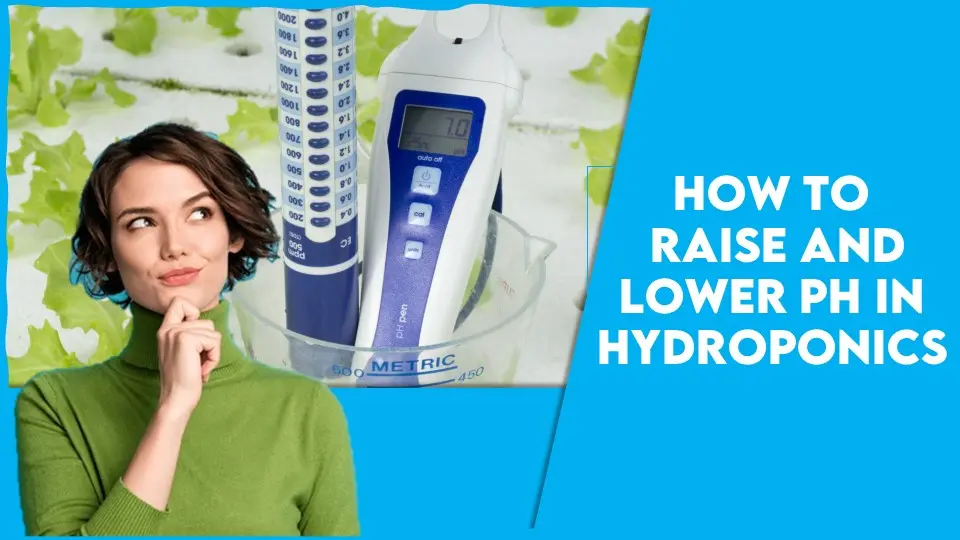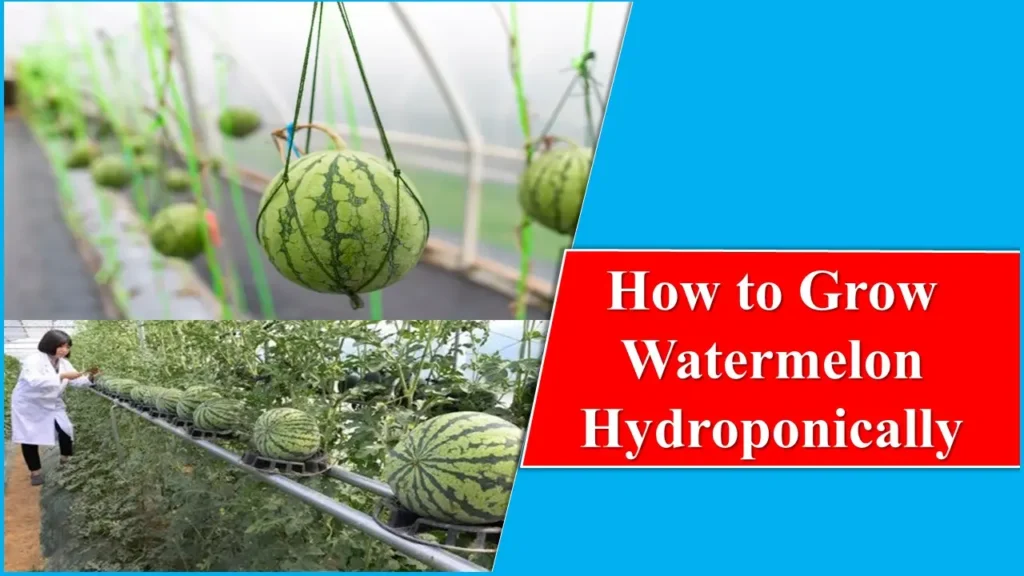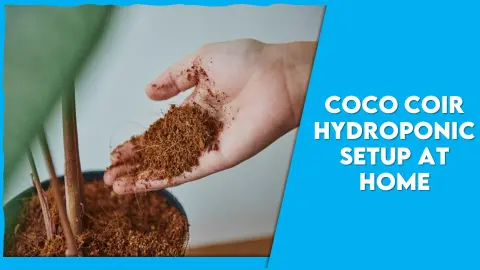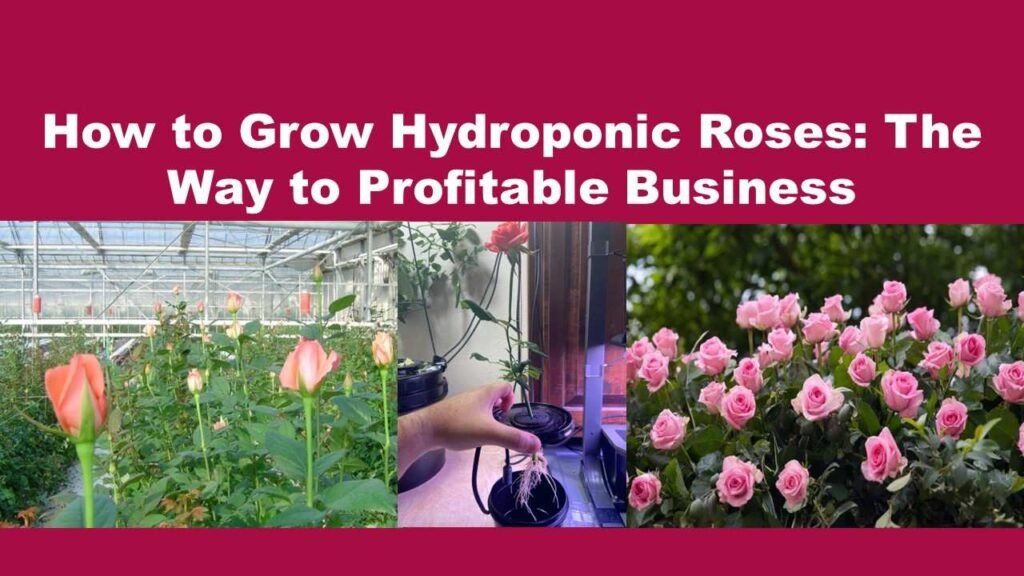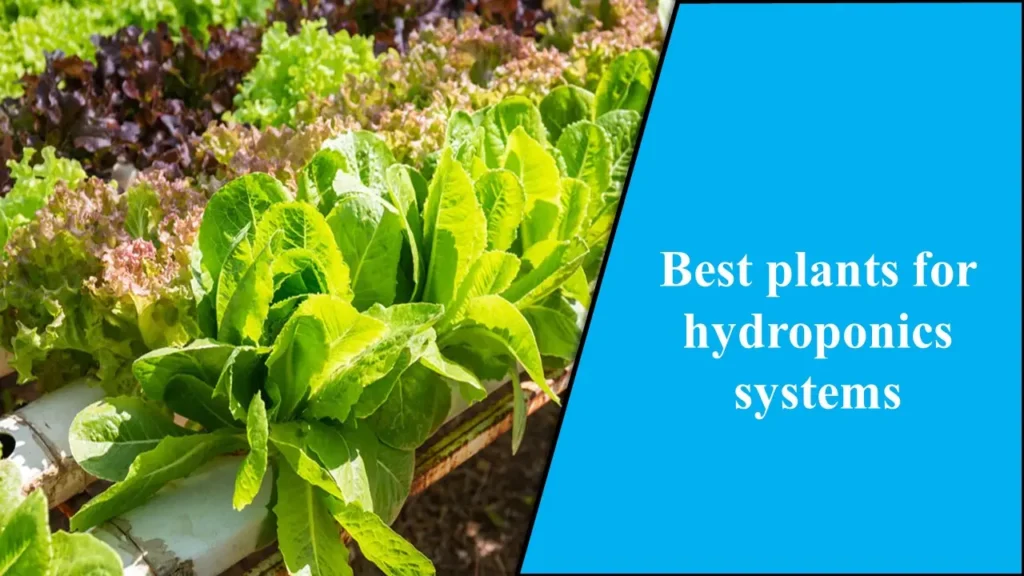How to Raise and Lower pH in Hydroponics: Easy Ways
Nowadays every new generation talks about opting hydroponics for farming as it is with a new technological progress in the field of agriculture and a remarkable option due to reducing soil health and climate change. This hydroponic technique comes with a lot of management issues and one of the most important ones is the pH factor of nutrient solution. pH is a measure of the acidity or alkalinity of a solution, and it is an important factor in various fields but here we consider hydroponics. The term “pH” stands for “potential of Hydrogen”, reflecting the concentration of hydrogen ions (H+) in a solution.
The pH scale ranges from 0 to 14, with pH 7 being neutral, as seen in pure water. Solutions with a pH below 7 are acidic, indicating a higher concentration of hydrogen ions, while those with a pH above 7 are alkaline or basic, reflecting a lower concentration of hydrogen ions. Let’s see how to raise and lower pH in hydroponics.
Impact of Maintaining a Good pH in Hydroponics:
“How to Raise and Lower pH in Hydroponics”, before learning this we should have to know about the impact of good or bad pH on plants. What is a good pH? Good pH can be defined as a particular pH on which the plant which is grown in hydroponic solution performs its best growth and if the pH is manipulated from that point its growth declines. Good pH is dependent on the plant we use in hydroponics. Every plant has its unique pH on which it can grow at its full potential.
| Effect | Description |
| Optimal Nutrient Uptake | 1. Ensures essential nutrients are in absorbable forms 2. Prevents nutrient deficiencies 3. Enhances overall nutrient efficiency |
| Healthy Root Development | 1. Promotes healthy root growth and function2. Enhances nutrient and water uptake3. Supports overall plant vigor and stability |
| Disease Prevention | 1. Reduces the growth of harmful pathogens2. Minimizes the risk of root rot and other diseases3. Creates a healthier growing environment |
| Maximized Growth and Yield | 1. Supports vigorous growth and higher yields2. Enhances photosynthesis and energy production3. Improves fruit and flower quality |
| Stress Reduction | 1. Maintains consistent pH levels, reducing plant stress2. Creates a stable growing environment3. Prevents shock from pH fluctuations |
Impact of not Maintaining a Good pH in Hydroponics:
| Disadvantage | Description |
| Nutrient Deficiencies | 1. Impairs nutrient uptake, leading to deficiencies2. Essential nutrients become unavailable to plants3. Symptoms like chlorosis and stunted growth can occur |
| Nutrient Toxicities | 1. Certain nutrients become too available, leading to toxic levels2. Causes nutrient imbalances and harm to plants3. Can result in leaf burn and poor growth |
| Poor Root Health | 1. Damages root structure and function2. Reduces nutrient and water absorption3. Increases susceptibility to root diseases |
| Reduced Growth and Yield | 1. Stunts overall plant growth2. Reduces fruit and flower production3. Leads to lower quality and quantity of yield |
| Increased Plant Stress | 1. Causes physiological stress to plants2. Plants expend energy adapting to unfavorable conditions3. Weakens plant defenses against pests and diseases |
| Microbial Imbalance | 1. Favors harmful pathogens over beneficial microbes2. Increases risk of diseases like root rot3. Disrupts the beneficial microbial ecosystem |
How to Raise and Lower pH in Hydroponics:
In the discussion of Raise and Lower pH in Hydroponics first make a view on how to raise if solution is low in pH.
How to Raise pH in Hydroponic System
To Raising the pH in a hydroponic system is necessary when the nutrient solution becomes too acidic. Here are some methods to increase the pH level:
- Using pH Up Solutions:
- Potassium Hydroxide (KOH): Commonly used to raise pH in hydroponics.
- Potassium Carbonate (K₂CO₃): Another option for increasing pH.
- Using Natural Methods:
- Baking Soda (Sodium Bicarbonate): Can be used in small amounts to raise pH, but it’s less stable and should be used cautiously.
- Dolomite Lime: Provides a slow-release, long-term pH increase and also adds calcium and magnesium.
- Monitoring and Adjusting:
- Step-by-Step Adjustment: Add pH-raising agents gradually and mix thoroughly. Check pH after each adjustment until the desired level is reached.
- pH Meter or Test Strips: Use a reliable pH meter or test strips to monitor the pH accurately.
- Regular Maintenance:
- Frequent Testing: Regularly test the pH to ensure it stays within the optimal range.
- Adjustments: Make small, frequent adjustments rather than large changes to avoid shocking the plants.
Step-by-Step Guide to Raise pH
- Test the Current pH:
- Use a pH meter or test strips to measure the current pH of the nutrient solution.
- Prepare pH Up Solution:
- Dilute the pH-raising agent (e.g., potassium hydroxide) in water according to the manufacturer’s instructions.
- Add the Solution:
- Add the pH Up solution gradually to the nutrient reservoir. Stir the solution well to ensure even distribution.
- Retest the pH:
- After mixing, retest the pH to see if it has reached the desired level. Repeat the process if necessary.
- Monitor and Maintain:
- Regularly monitor the pH to maintain it within the optimal range (typically 5.5 to 6.5 for most plants).

image source: atlas scientific
Tips for Raising pH Safely
- Avoid Overcorrection: Adding too much pH-raising agent at once can cause the pH to swing too far in the opposite direction.
- Stir Thoroughly: Ensure the pH-raising agent is thoroughly mixed in the solution to get an accurate pH reading.
- Use Quality Water: Starting with distilled or reverse osmosis water can help maintain more stable pH levels as it reduces contaminants that can affect pH.
How to Lower pH in Hydroponic System
Lowering the pH in hydroponics is essential for maintaining proper plant growth as in basic pH conditions plants cannot absorb nutrients from the solution as well as the enzymes are pH specific and work on a specific pH which is less than 7 for most cases. Here are some methods to effectively lower the pH in your hydroponic system:
| Method | Description |
| Phosphoric Acid | 1. Commonly used acid for lowering pH 2. Provides additional phosphorus for plants as it is important for growth |
| Nitric Acid | 1. Effective at lowering pH quickly 2. Supplies additional nitrogen to plants |
| Sulfuric Acid | 1. Strong acid that lowers pH efficiently 2. Provides sulfur, a secondary nutrient |
| Citric Acid | 1. Organic acid that can lower pH 2. Suitable for small adjustments 3. Not as strong or long-lasting as mineral acids |
| Vinegar (Acetic Acid) | 1. Readily available and can lower pH 2. Suitable for small adjustments 3. Not as stable or effective as stronger acids |
Steps for Lowering pH:
- Test the Current pH: Use a pH meter or test strips to determine the current pH level of your nutrient solution. testing the pH is most important part of “Lower pH in Hydroponics”.
- Prepare the Acid Solution: Dilute the chosen acid in water. A concentrated solution may show some adverse effects on the plants so by diluting its bad effects can be countered.
- Add Acid Gradually: Slowly add the diluted acid to the nutrient solution, a little at a time, while continuously stirring.
- Re-test the pH: After each addition, allow the solution to circulate for a few minutes and then re-test the pH.
- Adjust as Necessary: Repeat the process until the pH falls within the desired range (typically 5.5 to 6.5).
- Monitor Regularly: Check the pH daily or at least several times a week to ensure it remains stable.
Tips:
- Safety First: Always wear protective gear (gloves, goggles) when handling acids.
- Dilution: Dilute acids before adding them to your system to prevent rapid pH changes.
- Small Increments: Make adjustments in small increments to avoid overshooting the desired pH range.
- By doing these one can safely learn “How to Lower pH in Hydroponics”.
Strategies for Stabilizing pH in Hydroponics:
| Strategy | Description |
| Use Buffered Nutrient Solutions | 1. Use nutrient solutions that contain pH buffers2. Helps maintain a consistent pH level over time |
| Regular Monitoring | 1. Check pH levels daily or at least several times a week2. Allows for timely adjustments and prevents large swings |
| Quality Water Source | 1. Use distilled or reverse osmosis water2. Avoids contaminants that can affect pH stability |
| Consistent Feeding Schedule | 1. Regularly replenish and refresh the nutrient solution2. Prevents buildup of pH-altering substances |
| pH-Stable Nutrients | 1. Use nutrients designed for hydroponics2. Formulated to be stable in solution and less likely to alter pH |
| Add pH Buffers | 1. Add pH buffer solutions to your nutrient mix2. Helps resist changes in pH due to nutrient uptake or water evaporation |
| Avoid Over-Adjusting | 1. Make small, incremental pH adjustments2. Prevents large fluctuations and helps find the ideal pH more easily |
| Monitor EC Levels | 1. Keep an eye on electrical conductivity (EC) levels2. High EC can affect pH and nutrient uptake |
| Maintain Proper Temperature | 1. Keep nutrient solution at the right temperature (65-75°F or 18-24°C)2. Extreme temperatures can affect pH stability and also the lower can hinder it |
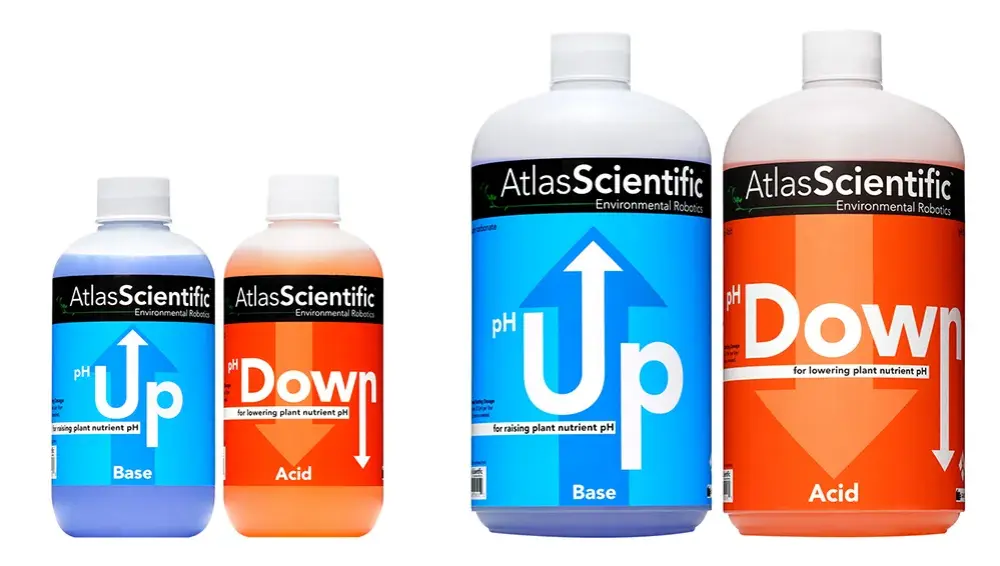
image source: atlas scientific
Detailed Steps for Each Strategy
- Use Buffered Nutrient Solutions:
- Choose nutrient solutions that are specifically designed for hydroponics and contain pH buffers.
- Regular Monitoring:
- Use a reliable pH meter or test strips to check pH levels regularly. Frequent monitoring allows you to catch and correct pH fluctuations early. “Raise / Lower pH in Hydroponics” is effective when we will monitor the pH because then we can find what will be to do, raising the pH or lowering it.
- Quality Water Source:
- Start with high-quality water, such as distilled or reverse osmosis (RO) water, which is free from impurities that can affect pH levels.
- Consistent Feeding Schedule:
- Develop a consistent schedule for adding nutrients and changing the nutrient solution.
- pH-Stable Nutrients:
- Use nutrient formulations that are stable and specifically designed for hydroponic systems. These nutrients are less likely to cause drastic changes in pH.
- Add pH Buffers:
- Incorporate pH buffer solutions into your nutrient mix.
- Avoid Over-Adjusting:
- When adjusting pH, add acids or bases in small increments and allow the solution to circulate before testing again. This prevents overshooting the desired pH range. One important thing in “How to Raise and Lower pH in Hydroponics” that it should not be overdone as this will also cost the time and some negative impacts.
- Monitor EC Levels:
- Keep an eye on the electrical conductivity (EC) of your nutrient solution. Ensure EC levels are within the recommended range for your plants.
- Maintain Proper Temperature:
- Keep the nutrient solution at an optimal temperature (65-75°F or 18-24°C).
Conclusion:
As we discuss pH is one of the most important factors which helps in better functioning of the hydroponic system in terms of plant growth and plant health. As it is so important to know “How to Raise and Lower pH in Hydroponics” to get healthy plants and good yield. So to take proper measures to stabilize or we can say maintain the pH will help in smooth functioning of plant growth and ultimately the hydroponic system. By learning to Raise and Lower pH in Hydroponics it makes more chances of successful hydroponics.
Join Our Hydroponics Growers Group!
Connect with fellow hydroponics enthusiasts, share your ideas, ask questions, and grow together as a community.
👉 Join WhatsApp Group
